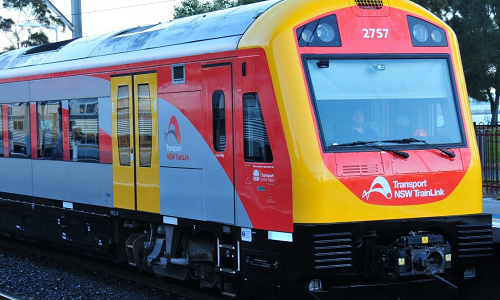The Disability Transport Standards are currently being reviewed by the Australian Government’s Department of Infrastructure, Transport, Regional Development, Communications & the Arts.
We prepared a submission to the Review through the lens of our involvement in the Transport for NSW Accessible Transport Advisory Committee (ATAC), of which we are a long-standing member, represented by Ms Christine Hunter.
NSW Opal travel cards data shows there were 20 million Opal card trips in the month of June 2022, implying that 3.3 million passengers per month could have had hearing loss.
In our research we found that Transport for NSW had made commendable efforts to increase the accessibility of its services for people with hearing loss, by installing hearing loops. Unfortunately, however we know that its efforts are not reaching as many people with hearing loss as needed, especially in circumstances of disruptions to commuter rail services.
On this basis, Transport’s strategy for supporting passengers with hearing loss needs to include multiple forms of one-to-many real-time communication, such as text-based visual signage.
Deafness Forum Australia found that a combination of aural and text-based real-time information would better meet the needs of passengers who are living with hearing loss.
Read the Deafness Forum Australia Submission to Stage 2 Reform of Disability Standards for Accessible Public Transport 2002 that was prepared for Transport for NSW by our Consumer Advocate and Transport Adviser, Christine Hunter.
A Personal Experience
Most people with hearing loss would be able to relate stories of difficulty during a disruption of transport services. One member of the Deafness Forum reported the following incident:
She has severe hearing loss and relies heavily on high quality hearing devices. Recently she was on a train journey that was experiencing an extended delay. There were audio announcements on the train but this time it was unintelligible, largely because the sound system on that carriage was faulty. The real-time station signage on the train could offer no information on the delay and was not visible from the vestibule of the carriage.
On arrival at the next train station there was unclear advice about the need for passengers to disembark and the amplified message on the station was little better. The heavily accented station master was also speaking quickly, complicated by the fact that there was a lot of background noise. This led to much confusion for many. She had little idea of the alternative arrangements and resorted to asking a complete stranger where they had to go and whether or not other arrangements were being advised.
Fortunately, this incident did not threaten her safety, but it was certainly frustrating and inconvenient. It also reminded her forcefully of her disability and that under these circumstances she was not able to act independently as she normally does when travelling.
The incident is not the only time that the transport system’s communication strategies during disruptions have not met her needs.
In this situation, the isolation and helplessness felt by this person would have been typical of people who have hearing loss and, considering the analysis above, there could easily be many people, both those using hearing devices and those who were not, experiencing similar difficulties on a daily basis during public transport journeys.
Our Findings and Recommendations
A reliance on T-coil technology is not sufficient to meet the needs of the majority of passengers with hearing loss.
Ideally, there needs to be clear real-time text-based messaging that can back up any announcements made. For example, in trains where there is rolling overhead real-time signage indicating the train route and upcoming stations, consideration should be given for updates from Rail Operations Centre to be displayed, if only to advise passengers to alight and wait for further official advice in times of delay.
Real time electronic signage should also be clearly displayed at railway stations and other transport terminals.
All written and graphical transport related stand-alone signage (including maps and directions) on stations should be clearly visible and easily read and able to be understood by all commuters.
There are real-time communication apps available on smart phone devices (e.g. Tripview) which provide excellent timetable and travel information. This is a great way to access real-time information regarding timetabling and if there are delays or disruptions to services. However, given that a large percentage of the people with hearing loss who are aged over 65 years, many may not have smart phones or be able to manage this facility, particularly if they have dexterity issues or have no access to smart technology.
Current disability training for staff and operators is very general, not disability specific.
For hearing loss, the training needs to be more specific. Customer service staff and operators need to understand that it is less about speaking louder and more about ensuring that there is clarity in communication.
Unfortunately, the more recent wearing of face masks has made lip reading impossible and therefore much harder to understand face to face conversation as the sounds are also more muffled.

